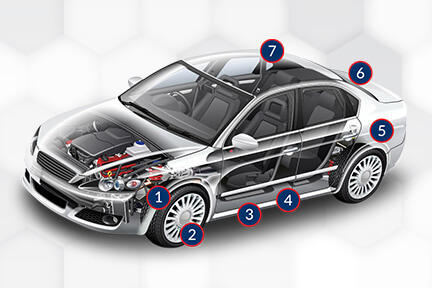Dec 22, 2024
Rubber-to-substrate bonding is a critical process across industries such as aerospace, transportation, industrial applications and more. Adhesives play a critical role in in achieving strong and reliable bonds when bonding rubber to substrates. When the adhesive fail[…]
May 23, 2023
Rubber to substrate bonding refers to the process of combining elastomers to substrates made of various materials through various chemical and mechanical means. This bonding technique is utilized in numerous industries, including automotive, sealing, aerospace and ma[…]
Apr 15, 2023
Manufacturers are constantly seeking innovative ways to reduce product weight—particularly for high-volume goods. Reducing weight not only contributes to significant cost savings and improved environmental performance, but it also enhances design flexibility, allowin[…]
Sep 26, 2019
Across the automotive, medical, utility and many other industries, rubber to substrate bonding is a common process. Creating a successful rubber to substrate bond means both choosing the right adhesive and using the adhesive properly. In all applications, the integri[…]
Apr 03, 2019
There are many advantages to using a one-coat bonding system over the traditional primer and top coat. These include:
Simplification of process
Simplification of the adhesive supply
Potential reduction in overall adhesive usage
Potential reduction in th[…]
Jan 02, 2018
Adhesives play a critical role in maintaining a strong, durable bond in rubber to substrate bonding. If the adhesive fails, the part will invariably fall.
There are hundreds of causes for rubber to substrate bond failures — all of which H.M. Royal has the tools an[…]
Oct 23, 2017
When trying to pinpoint the cause of a rubber to substrate bonding (RTS) failure, you may consider the type of bonding adhesive or cover coat. But what about your cleaning process? Read on to learn about prepping surfaces for rubber to substrate bonding.
Poor surf[…]
Sep 02, 2014
As a supplier of so many different compounding agents across industries, we often get a unique view of the types of products our customers use and how seemingly dissimilar chemical ingredients can work together in one compound to produce some amazing results. One of […]









